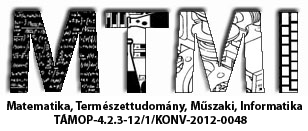Prevalence of ESBL-producing enterobacteria in stool samples of asymptomatic individuals
Előadás adatai
This study aims at determining prevalence of bacteria producing extended spectrum beta-lactamases (ESBLs) in asymptomatic individuals (with no sign of any infection or ongoing infection that might be attributed to ESBL-producing bacteria) in a population studied earlier by our group to assess whether prevalence rates change over time or are stable.
We used 829 faecal samples from two groups of individuals to be screened for enteric pathogens between October 2009 and March 2010; samples were from 537 individuals screened for employment eligibility purposes (jobs at hospitals, food processing, etc.; 182 males and 355 females, mean age 35.2 years), and from 292 individuals applying for long-term care facilities (121 males and 171 females, mean age 66.8 years).
The samples were inoculated onto eosin methylene blue agar, supplemented with 2mg/l cefotaxime. Recovered isolates were identified using standard microbiological methods and antibiotic susceptibility test was performed using the standard disk diffusion method. ESBL production was confirmed using the double disk synergy test. PCRs were performed to detect the presence of blaTEM,, blaSHV , blaCTX-M genes.
ESBL producers were isolated in 3.9% (32/829) of the samples, these rates among individuals on employment screening and applicants for long-term care were 2.4% (13/537) and 6.5% (19/292), respectively. Among ESBL producers there were 24 Escherichia coli, seven Klebsiella pneumoniae and 1 Proteus mirabilis. A blaCTX-M gene was detected in 18 of the 32 ESBL producers.
These results are in close accordance with those found by our group studying an earlier period, indicating that the carriage rates and species distributions are stable. The high prevalence rate of ESBL-producers among individuals applying for admission into long term care facilities may be explained by their probable previous hospitalizations. However, the rate 2.4% among the other group indicates that acquisition of ESBLs is also possible outside the hospital environment. The carriage rate is especially alarming if we consider that the samples individuals will work in jobs associated with high risk of transmission of pathogens.
Támogatók: Támogatók: Az NTP-TDK-14-0007 számú, A Debreceni Egyetem ÁOK TDK tevékenység népszerűsítése helyi konferencia keretében, az NTP-TDK-14-0006 számú, A Debreceni Egyetem Népegészségügyi Karán folyó Tudományos Diákköri kutatások támogatása, NTP-HHTDK-15-0011-es A Debreceni Egyetem ÁOK TDK tevékenység népszerűsítése 2016. évi helyi konferencia keretében, valamint a NTP-HHTDK-15-0057-es számú, A Debreceni Egyetem Népegészségügyi Karán folyó Tudományos Diákköri kutatások támogatása című pályázatokhoz kapcsolódóan az Emberi Erőforrás Támogatáskezelő, az Emberi Erőforrások Minisztériuma, az Oktatáskutató és Fejlesztő Intézet és a Nemzeti Tehetség Program



